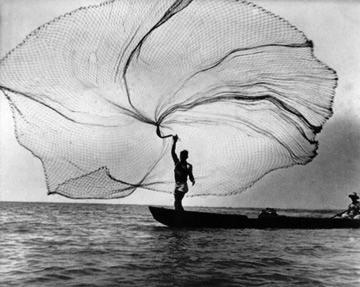
Copyright: Fundación Leo Matiz
Centro Hispanoamericano de Cultura Calle Malecon 24 Cuba
For almost sixty years, Colombian photographer Leo Matiz (1917-1998) depicted the town of Arataca in his works, the same town Gabriel Garcia Marquez used as a source of inspiration in his novel “ Cien años de Soledad” ( A hundred years of Solitude.) He was born in the same year Russian bolcheviques were changing their history. During the 1930´s, in Mexico, Matiz knew and took photos to oustanding artists such as painters David Alfaro Siqueiros, Diego Rivera, Frida Kanlo, Spanish director Luis Buñuel, Maria Félix, a diva of the Mexican movie, and composer Agustín Lara. Then, he lived in Venezuela for 40 years, where he was an official photographer at the Miraflores presidential palace. In 1959, he depicted images of Fidel Castro during his visit to Venezuela after Batista´s dictatorship was brought down. He was also caricaturist, painter, movie photographer, actor, publisher and founder of galleries and medias.
Thanks to the Colombian Ministry of Foreign Affairs, the Leo Matiz Foundation and the Hispanoamerican Culture Center, the 40-black and white images exhibition “Macondo visto por Leo” will be on view at the Havana Malecon from July 12 through.Such images were taken by Matiz between 1930 and 1990 and was open by his daughter Alejandra, who is also at the helm of the Foundation.“Garcia Marquez´s characters included in his novel “Cien Años de Soledad” and those of Leo Matiz have gathered in this exibition. The presence of this exhibition in Havana is a fullfilled dream,” said Alejandra. This exhibition has been presented in Canada, Belgium, Japan, Mexico and Dominican Republic.
Considered the most important Colombian photographer of the 20th century, author of over a million photos and important graphic publications such as Life, Harper Magazine, Look, Reader Digest and Mexico Cinema, Leo Matiz is considered as “ the “guard of shadows” in the history of images throughout the continent due to his magistral use of light contrast. Using this expressive resource, Matiz delved into the testimony of political figures and the every- day misery.Thus, he became a privileged and active witness of the 20th century in Latin America.
Copyright: Fundación Leo Matiz

